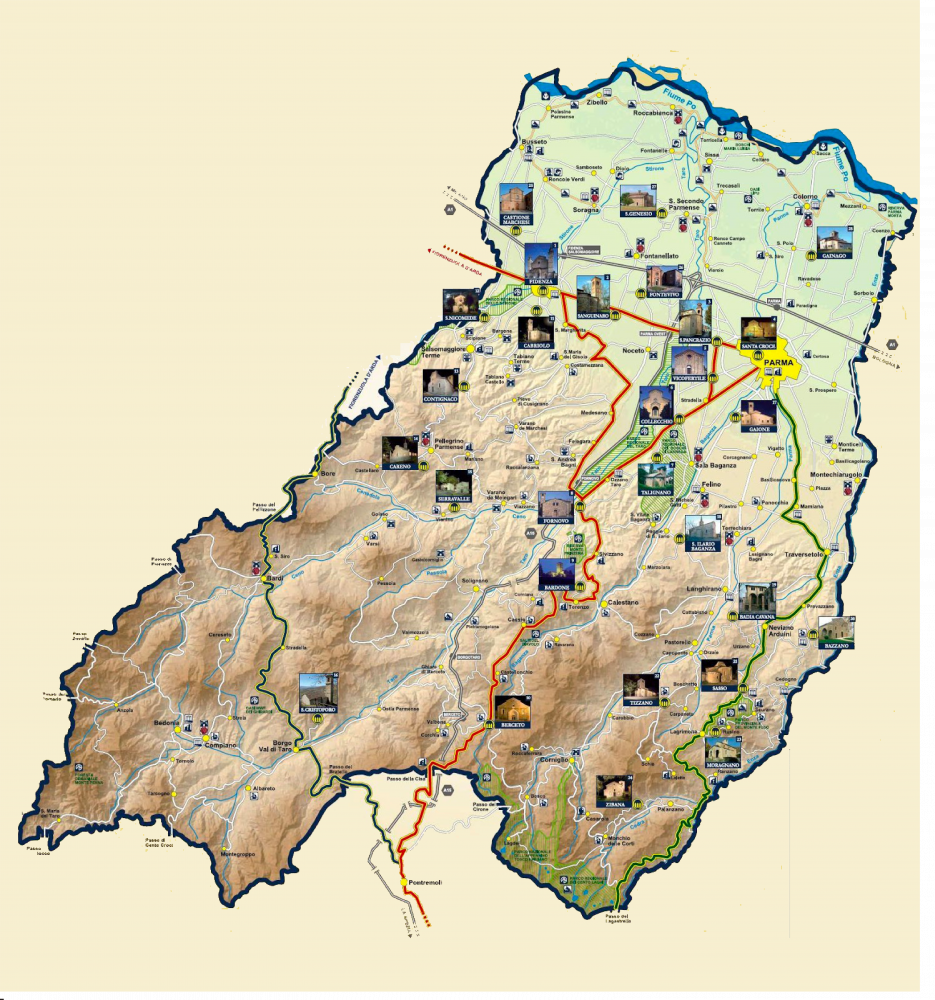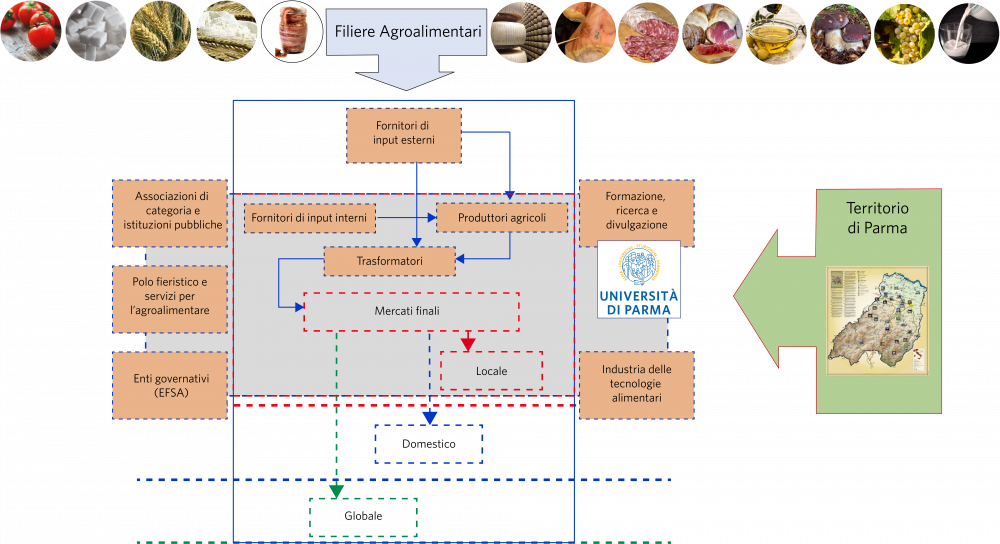Territorial Context
 |
The territory of Parma and its vocation for food production: from Food Valley to BIO-Economy Valley
|
|
The food culture of Parma's territory is rooted in a history that, in order to cope with environmental and political constraints, has developed foodstuffs capable of lasting over time, providing healthy food for the inhabitants of this area. Over time, these foods have acquired a reputation that still allows the name of Parma to be carried around the world. Over time, however, particularly since the end of the First World War, thanks to its operational and entrepreneurial spirit, the territory of Parma has expressed a strong specialization in the agri-food sector, so much so that it has been called the 'capital of the Italian food valley'. The elements that justify this consideration are due to the simultaneous presence of many of the components of a modern agri-food system:
- the presence of agricultural production structures managed in accordance with sustainable production techniques, thanks to the adoption of production regulations; - a vital and diversified rural territory where agricultural and artisanal (if not industrial) activities benefit each other with respect to the use of human resources and the relationship with the environment, creating interesting synergies from a social and economic point of view; - The presence of diversified production structures with a common matrix: the production of excellence foods. In fact, in the Parma area there are several production chains that interact with each other: · the milk chain (in the production of cheese, dairy products and milk for food use); · the industrial tomato chain (about half of the industrial tomatoes produced in Italy are processed in the province of Parma); · the sugar sector (the province of Parma has one of the few active sugar factories in Italy); · the 'other canned food' sector (produced by the same companies that process industrial tomatoes); · the cereal sector (with national and international seed companies), bread-making (with mills), pasta (dry and fresh), bakery products and animal feed. This supply chain includes enterprises ranging from artisanal to industrial in size with very diverse outlet markets; · the beef and veal and pork sector: from farms to charcuterie factories and slaughterhouses; · the fish canning industry; · the wine sector, which, although of modest quantities compared to national competitors, presents elements of qualitative distinction; · the mineral water sector; - the coexistence of different forms of management including individual firms, cooperative firms (the first forms of Italian production and services agricultural cooperation have been created in Parma), corporate firms, multinational firms. These companies relate to each other using, in some cases, innovative membership forms, such as OP (Organisation of Production) and IO (Interprofessional Organisations). But that’s not all: in the province of Parma, intermediate organisational forms, such as Protection Consortium/Producers Association are operating. By protecting and promoting the quality of traditional products with the Indication of Origin label, they ensure sustainability of small producers when dealing with markets; - the production of agricultural goods is supported by farms by providing technologies and services for the management, processing and marketing agricultural inputs and industrial outputs. In fact, the province of Parma, besides being an important food farming centre, is also an industrial centre specialised in the food technology industry. In Parma there are important industrial groups that produce technologies for the conservation and processing of food in appropriate hygienic conditions with respect to the most inflexible European and international standards and legislative boundaries; - the European Food Safety Authority (EFSA), which benefits of local food culture and intermediate food institutions, and protects the health of European consumers by verifying the accuracy of production methods implemented in the food supply chain; - the presence of a trade fair centre specialised on food, both in the production and marketing phase; - In the food field, in association with the other territories of Emilia Romagna and Italy, the strong connection between other production industries.
This pattern can be fully understood if the different actions and functions are not perceived separately, but rather as a part of the whole productive system described as “Local Agroindustrial System”, that is able to set up interactions and synergies among supply chains and different types of firms. In this perspective, the University of Parma is a central player in the development process of the territorial system related to food in the province of Parma, acting on these levels: - the training of highly specialised human resources through Bachelor’s degree courses, Master's degrees, postgraduate courses and higher education. Every year, the University of Parma receives more than 2,000 new students on food-related courses; - playing the role of "technical assistance" for small, medium and large enterprises in the food sector and in the agri-food mechanics sector;
The Food Project of the University of Parma therefore aims to be a modern and flexible tool for dialogue between researchers and the world of companies involved in its production and marketing, also anticipating future European indications provided by the "new green deal" and the "farm2fork" strategy. |
|
The Agroindustrial System of Parma

